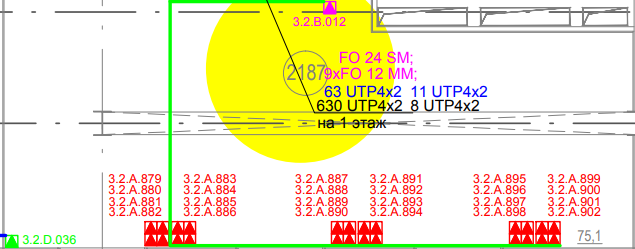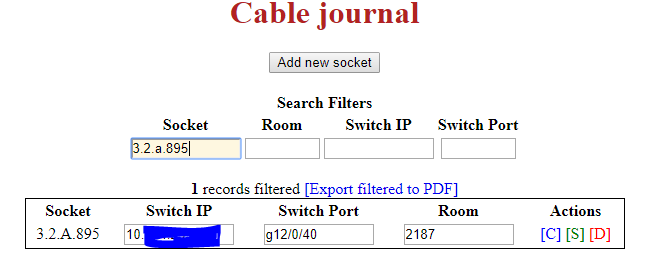Simple network port management
Hello!
I represent a small infrastructure department of one very large state center.
We have accumulated a lot of interesting solutions, in any case, it seems to us and we decided to start a blog, maybe someone will benefit from our developments.
So let's go!
Surely many of you are faced with the routine operations of support, which are time-consuming and do not leave space for creativity. This is especially true for small and medium-sized companies, where administrators combine several areas.
After analyzing the applications, we realized that one of these tasks is setting up ports (by the way, we have more than 15,000 of them), and the center lives, grows and is constantly changing. It would seem that there is something difficult, but you know this process: to find an outlet, find it in the cable magazine, find out where it is connected, find the access details to the correct switch, etc. on the process.
And here we wondered how to simplify, and ideally transfer this task to a cheaper support line? And then the idea was born to create a system in which everything will be on the principle of “one window”, that is, all you need to know is the outlet number!
Meet: NETMANAGE.
Author: Chief Specialist of our department pbcvit vitaliy@rozman.ru

The system is a PHP web application that manages hardware over ssh.
After logging in, the user enters the management page:

And all he needs is to simply drive in the outlet number, press the magic button and get information:

As you can see, everything is very simple, on the left the parameters selection panel, on the right the current port configuration. We tried our best to collect typical operations and make them in the form of checkboxes, buttons, drop-down lists - so that even a child could figure it out.
If you need to determine where exactly the outlet is, we can click on the cabinet number in the Socket location table and get the exact location on the map:

A map of the entire floor is loaded, the desired place is highlighted in yellow. And at the same time and see how the track goes, types of cables and so on.
What if we need to find a specific IP or MAC? Easy! Go to the appropriate tab:

From here you can immediately reconfigure it.
Well, the cable log is kept on the next tab:

Here is such a simple, but very effective tool that reduced the time to configure the port from 15 minutes to 1, by any employee, even the most distant from network administration.
I think it makes no sense to describe how it works - the system is quite simple, but if the topic is interesting, we will definitely add technical details to the article, or answer your questions in the comments.
In the next article, we will talk about automatically adding a disk to a VM with Centos, followed by markup, adding to cascade-merged mount, setting to backup, writing the previous disk to tape and then deleting it from the online backup and all this by a signal from zabbix.
